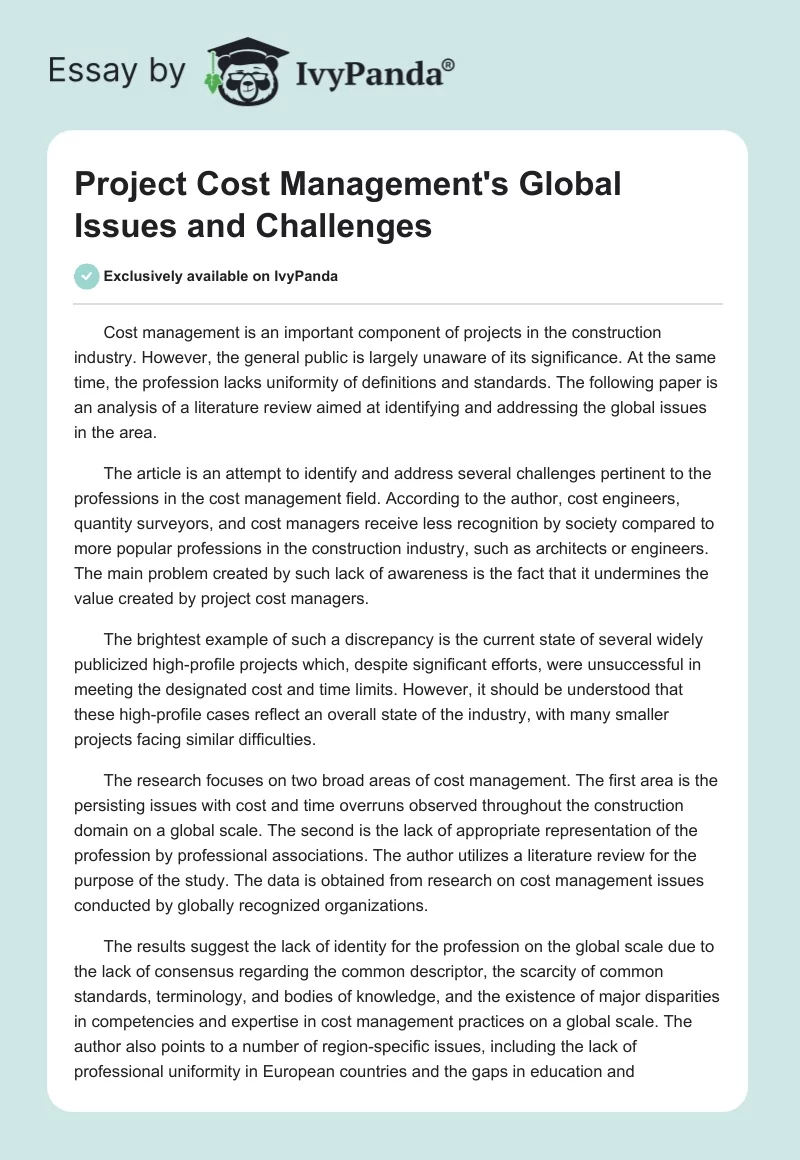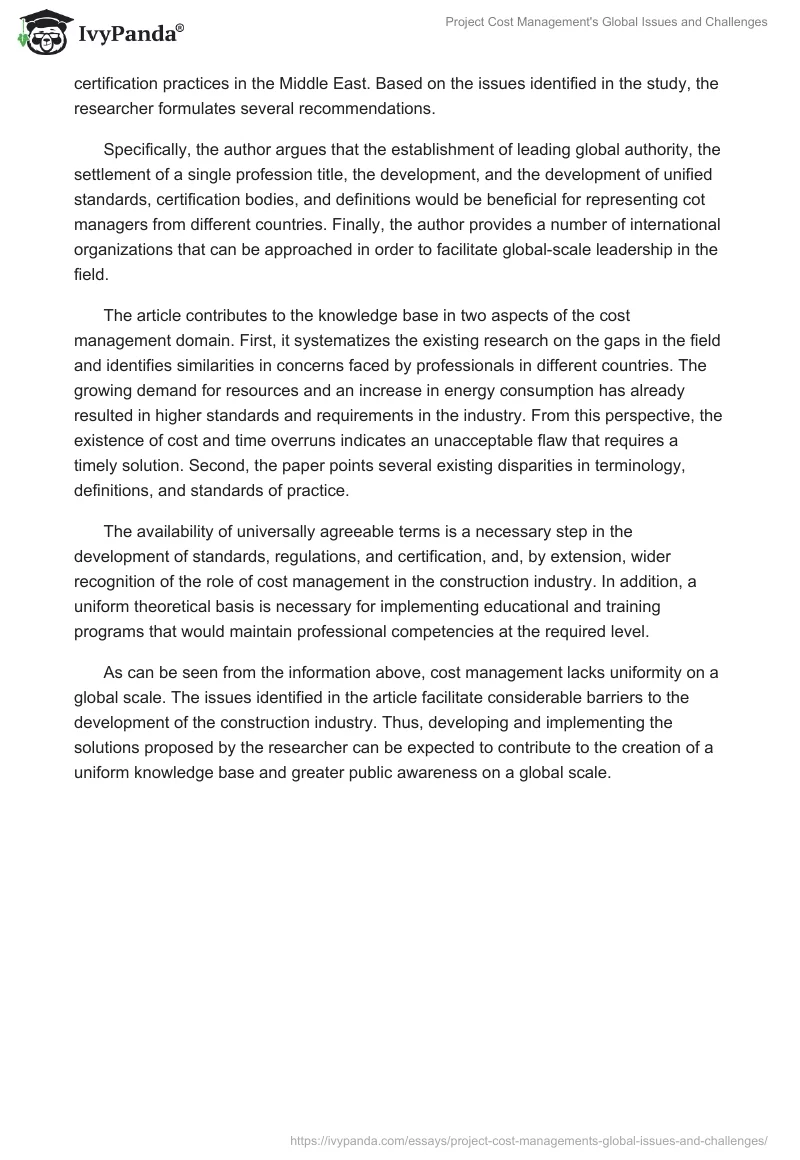Cost management is an important component of projects in the construction industry. However, the general public is largely unaware of its significance. At the same time, the profession lacks uniformity of definitions and standards. The following paper is an analysis of a literature review aimed at identifying and addressing the global issues in the area.
The article is an attempt to identify and address several challenges pertinent to the professions in the cost management field. According to the author, cost engineers, quantity surveyors, and cost managers receive less recognition by society compared to more popular professions in the construction industry, such as architects or engineers. The main problem created by such lack of awareness is the fact that it undermines the value created by project cost managers.
The brightest example of such a discrepancy is the current state of several widely publicized high-profile projects which, despite significant efforts, were unsuccessful in meeting the designated cost and time limits. However, it should be understood that these high-profile cases reflect an overall state of the industry, with many smaller projects facing similar difficulties.
The research focuses on two broad areas of cost management. The first area is the persisting issues with cost and time overruns observed throughout the construction domain on a global scale. The second is the lack of appropriate representation of the profession by professional associations. The author utilizes a literature review for the purpose of the study. The data is obtained from research on cost management issues conducted by globally recognized organizations.
The results suggest the lack of identity for the profession on the global scale due to the lack of consensus regarding the common descriptor, the scarcity of common standards, terminology, and bodies of knowledge, and the existence of major disparities in competencies and expertise in cost management practices on a global scale. The author also points to a number of region-specific issues, including the lack of professional uniformity in European countries and the gaps in education and certification practices in the Middle East. Based on the issues identified in the study, the researcher formulates several recommendations.
Specifically, the author argues that the establishment of leading global authority, the settlement of a single profession title, the development, and the development of unified standards, certification bodies, and definitions would be beneficial for representing cot managers from different countries. Finally, the author provides a number of international organizations that can be approached in order to facilitate global-scale leadership in the field.
The article contributes to the knowledge base in two aspects of the cost management domain. First, it systematizes the existing research on the gaps in the field and identifies similarities in concerns faced by professionals in different countries. The growing demand for resources and an increase in energy consumption has already resulted in higher standards and requirements in the industry. From this perspective, the existence of cost and time overruns indicates an unacceptable flaw that requires a timely solution. Second, the paper points several existing disparities in terminology, definitions, and standards of practice.
The availability of universally agreeable terms is a necessary step in the development of standards, regulations, and certification, and, by extension, wider recognition of the role of cost management in the construction industry. In addition, a uniform theoretical basis is necessary for implementing educational and training programs that would maintain professional competencies at the required level.
As can be seen from the information above, cost management lacks uniformity on a global scale. The issues identified in the article facilitate considerable barriers to the development of the construction industry. Thus, developing and implementing the solutions proposed by the researcher can be expected to contribute to the creation of a uniform knowledge base and greater public awareness on a global scale.


